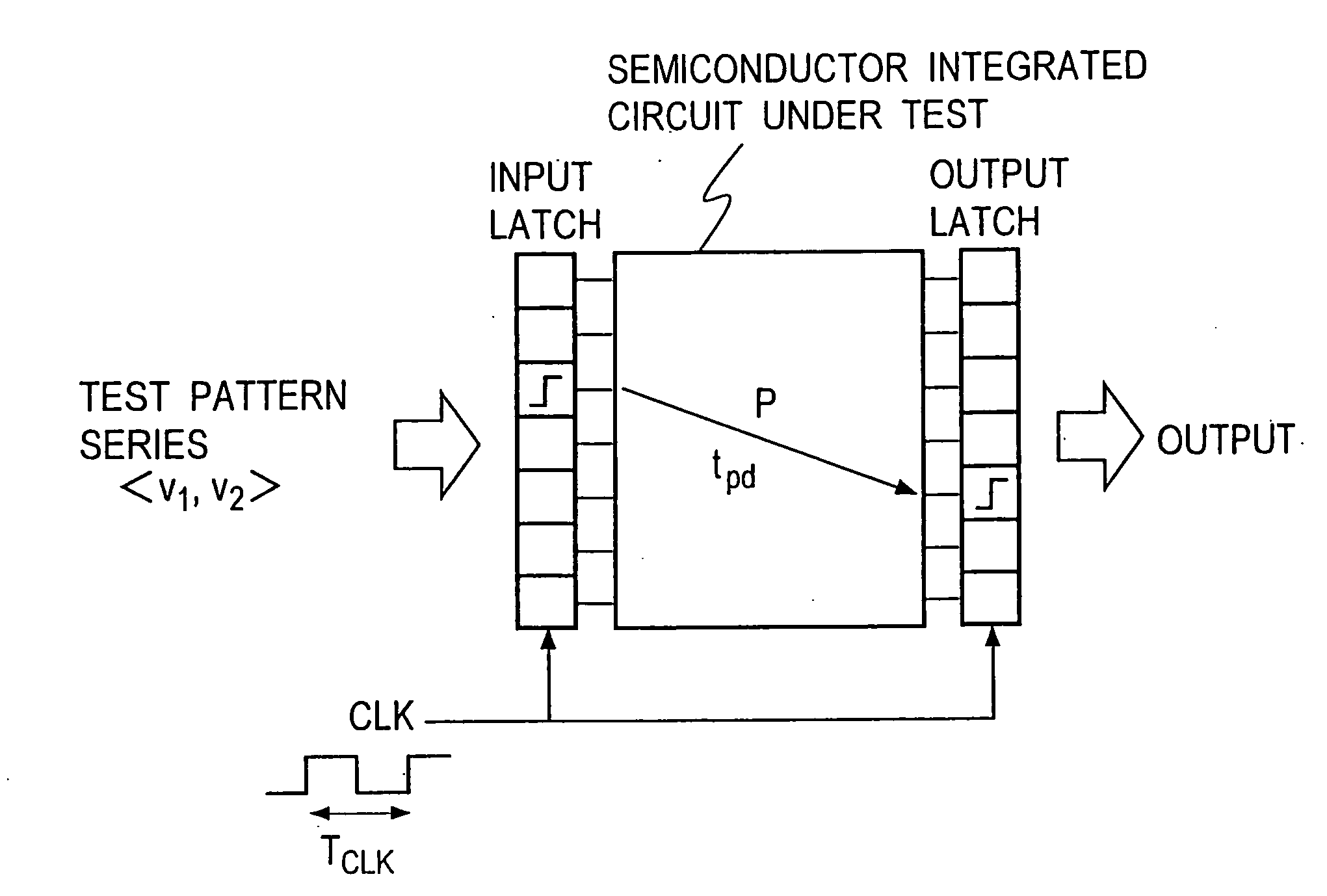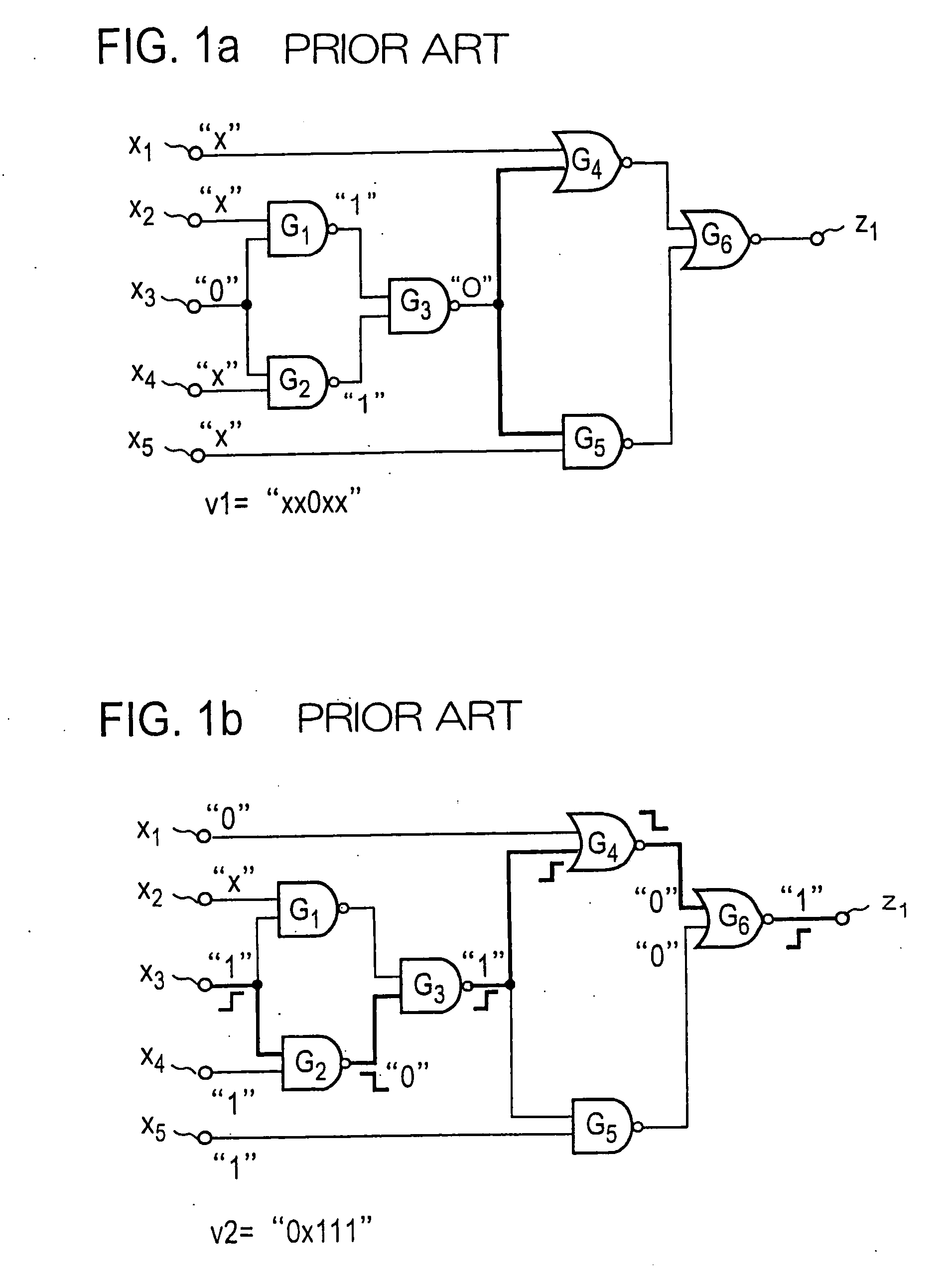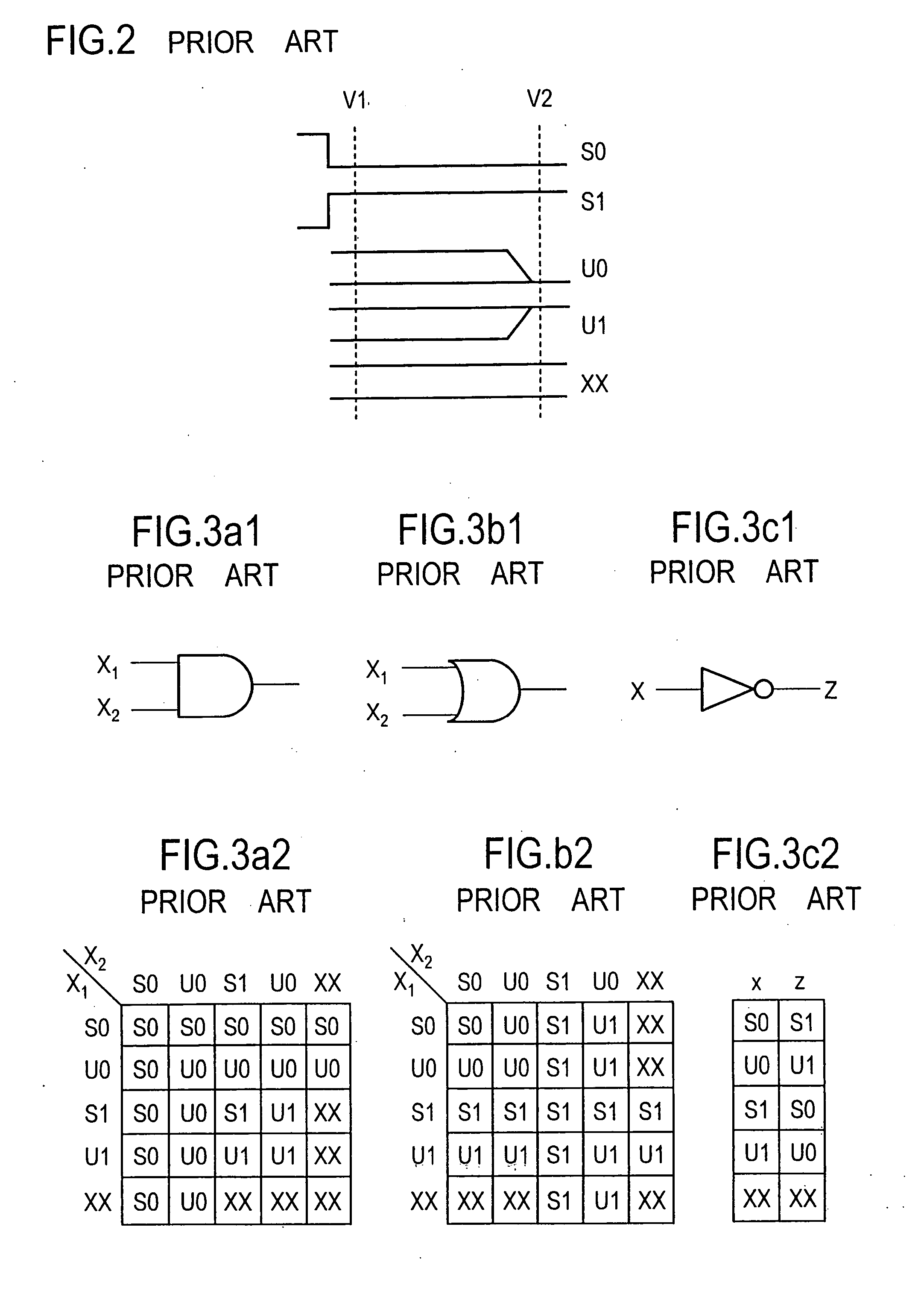Generating test patterns used in testing semiconductor integrated circuit
a technology for integrated circuits and test patterns, applied in error detection/correction, program control, instruments, etc., can solve problems such as difficulty in generating test patterns, circuit failure to operate normally, and difficulty in generating two test patterns (test vector pairs or test pattern sequences) to activate faults, so as to achieve the effect of increasing the overall processing speed
- Summary
- Abstract
- Description
- Claims
- Application Information
AI Technical Summary
Benefits of technology
Problems solved by technology
Method used
Image
Examples
Embodiment Construction
[0166] Several embodiments of the present invention will now be described.
[0167]FIG. 29 shows a processing procedure for a test pattern generating method according to an embodiment of the first aspect of the present invention. Initially, at step 101, a fault list in which all faults of a semiconductor integrated circuit under test are registered is prepared. The preparation of the fault list may take place by manually enumerating slow-to-fall faults (GF) and slow-to-rise (GR) for all logic gates, for example, in the semiconductor integrated circuit under test in a sequential manner, or by automatically deriving each logic gate (each internal signal line) by an electronic computer on the basis of circuit information. At next step 102, one of the faults in the list is selected for which test patterns are to be generated. At step 103, an attempt is made to determine, by the implication operation, an initialization test pattern v1 which applies an initial value to a fault location corr...
PUM
 Login to View More
Login to View More Abstract
Description
Claims
Application Information
 Login to View More
Login to View More - R&D
- Intellectual Property
- Life Sciences
- Materials
- Tech Scout
- Unparalleled Data Quality
- Higher Quality Content
- 60% Fewer Hallucinations
Browse by: Latest US Patents, China's latest patents, Technical Efficacy Thesaurus, Application Domain, Technology Topic, Popular Technical Reports.
© 2025 PatSnap. All rights reserved.Legal|Privacy policy|Modern Slavery Act Transparency Statement|Sitemap|About US| Contact US: help@patsnap.com



